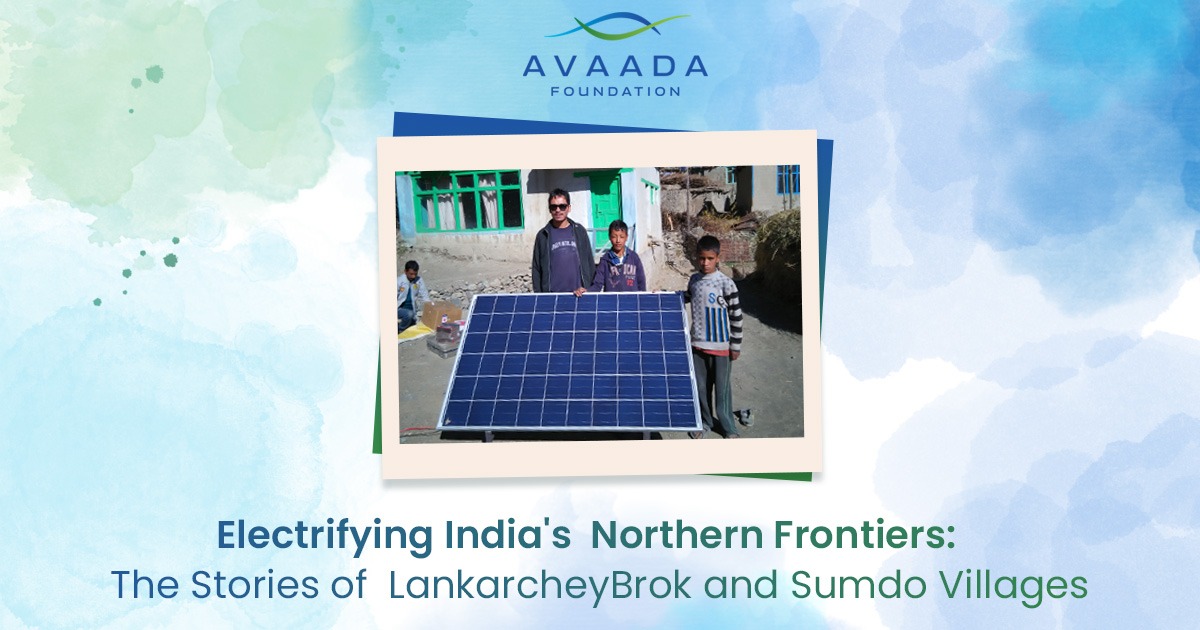The northern frontiers of India are known for their stunning scenery, rich cultural heritage, and resilient communities. However, some villages in the remote regions have been living without electricity for decades, including Lankarchey Brok and Sumdo. The Avaada Foundation, a non-profit organization, embarked on an electrification mission to improve the lives of these communities. This blog shares the inspiring stories of Lankarchey Brok and Sumdo villages and how the Avaada Foundation brought hope and progress to these communities.
Illuminating Lankarchey Brok and Sumdo Villages:
Story of Lankarchey Brok:
Lankarchey Brok is located 14,500 feet above sea level and 35 kilometres from Kargil, with 30 households and 500 people. None had electricity, and they used candles, traditional oil lamps, and solar lanterns to light their homes. The village was a significant part of the Kargil War in 1999. Avaada Energy employees worked with Global Himalayan Expedition (GHE) to install six 250W DC solar microgrids in less than two days after conducting an area survey. These microgrids lit up 200 rooms, including the mosque and immambada.
Story of Sumdo:
To reach Sumdo, located 80 km from Leh, one must move three more kilometres through rough terrain. That said, lighting up such a remote area requires extraordinary organizational abilities and a steely resolve. The GHE officials and Avaada Energy employees installed two 250 Watt DC solar microgrids in the villages, illuminating every room. Amazingly, it only took one day for the team to wire, install, and set up these grids in each of the village’s rooms. The village now has DC LED lights, DC solar street lights, and a DC LED television after implementing DC technology to enhance power efficiency.
The Transformation:
The Avaada Foundation commenced the electrification process in Lankarchey Brok and Sumdo villages with a clear vision and meticulous execution, bringing several transformations to these villages, including illuminating lives, impacting healthcare and education, and socio-economic upliftment. Electricity access opened up new economic opportunities, and villagers could work past daylight hours to earn a living. Cottage industries flourished, and entrepreneurship increased as people explored new opportunities to enhance their standard of living.
Conclusion
The electrification of Lankarchey Brok and Sumdo villages by the Avaada Foundation serves as a beacon of hope and progress for India’s northern frontiers. These communities have seen a remarkable change in their lives thanks to the power of sustainable and clean energy. The story of Lankarchey Brok and Sumdo villages reminds us of the significant impact electrification has on the lives of people living without electricity. Initiatives like these serve as a beacon of hope, showing the way to a better and more inclusive future as India continues on its path to progress and development.




